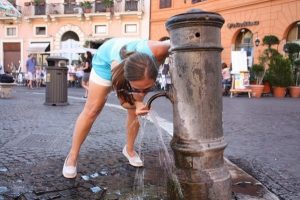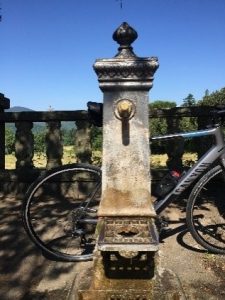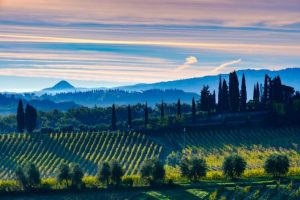 Italy is composed of many beautiful areas, from the vast farmed hills in Tuscany to the spacious beaches in Sicily, not forgetting the rich history preserved in Rome. It is also home to a rich culture forged through hundreds of years of development. And what about its water conservation? Focusing on Florence (where I am from) allows us to gain a better grasp on the personal and statistical accounts.
Italy is composed of many beautiful areas, from the vast farmed hills in Tuscany to the spacious beaches in Sicily, not forgetting the rich history preserved in Rome. It is also home to a rich culture forged through hundreds of years of development. And what about its water conservation? Focusing on Florence (where I am from) allows us to gain a better grasp on the personal and statistical accounts.
My Childhood in Rural Florence
My earliest memories consist of being enveloped by the Tuscan country-side. Even though I was born in London I have been going regularly to Florence (every year during the summer holidays) from a very young age (2 or 3 years old) making it truly feel like a second home. Every time I think back I see nothing but joy; Florence is a wonderful place to meet friends, have lunch, wonder around, gawking at the beautiful architecture, historic buildings and statues. What’s more, the weather is always amazing. It is weeks of sun, then a single day of heavy rain (sometimes coupled with thunder) then the next day, the sun is out again. (That’s summer in Italy for you. Winter is surprisingly cold. Ed.)
My family live an away hour from the capital. Passing through the Tuscan hills and mountains on the long journey to the city, feeling the warm breeze across my face, really sums up my childhood. We would see the river Arno emerge, spot ‘Ponte Vecchio’ from high up, and there, hiding just behind the river we would notice the glorious ‘Cattedrale di Santa Maria del Fiore’ (Cathedral of Florence) protruding from the sea of beige houses. A visit to Florence with the family would consist of many (sometimes too many) photos, pit stops at the infamous water fountains, looking at the toys for sale on the floor at ‘Ponte Vecchio’ and admiring the statues in ‘Piazza della Signoria’.
How water was used in my family
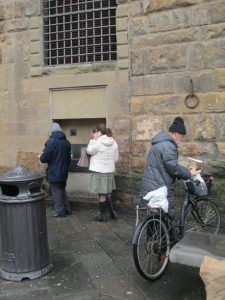 The Italian side of my family are mainly rural folk. My grandpa was a vegetable farmer, and water was integral to the daily routine. Because the summer was so hot, every chance we got we drank, and, as a simple family it didn’t matter to us where our water came from. Therefore, we often drank water from the tap, stored in glass bottles and cooled it in the fridge. I reckon about 15% of every day was us thinking, sometimes dreaming, about water.
The Italian side of my family are mainly rural folk. My grandpa was a vegetable farmer, and water was integral to the daily routine. Because the summer was so hot, every chance we got we drank, and, as a simple family it didn’t matter to us where our water came from. Therefore, we often drank water from the tap, stored in glass bottles and cooled it in the fridge. I reckon about 15% of every day was us thinking, sometimes dreaming, about water.
I can say now looking back that my family used water in the most efficient manner possible. For example, I remember always being frustrated as I had to limit my shower time. It was a re-occurring theme that my family displayed – being extremely aware of how each action affected their bill at the end of the month. The system with public water fountains has always been popular where I’m from. We would get our water from local water fountains, fill glass water bottles and take them home. This provided drinking water for around a week and saved money, while using glass bottles (which last for ever) preserved the temperature of the water for longer, thus maximising efficiency of resources.
Water fountains
In almost every crevice of Italy you can find a water fountain placed perfectly for human consumption, either in a park or on the side of a road. And Florence is no exception. It provides its citizens with free, high quality water from its fountains, many of which have a unique design – a rustic and traditional theme that contrasts with the surrounding city. (http://en.comune.fi.it/city/environment/water.html)
‘Publiacqua’ is the organisation which is responsible for the ‘collection, treatment, transport, and distribution’ of drinking water all over the country including Florence. It helps maintain a high quality of water and allows Tuscany to have public water fountains in close vicinity to each other.
Bottled water and Italians
I’m proud of the way that Italy and the province of Florence manage their water, but there is still room for improvement. Tap water, is barely drunk at all compared to bottled water consumption! Italians are the top consumers of bottled water in Europe, and third in the world. Bottled water causes pollution through waste from discarded bottles and if these bottles end up in the ocean they can harm marine life; also, plastic bottles are usually made from crude oil and other non-renewable resources, further increasing world-wide pollution.
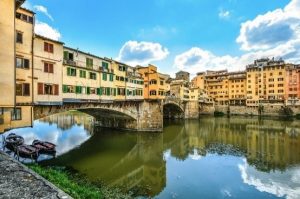 Florence has held a lot of campaigns against plastic bottles and against water wastage. However, in a city mainly populated by tourists, the message can become redundant, not reaching the people who are causing the problem in the first place. Or it does reach some but then they leave the city after three or four days and whilst they may carry that knowledge to their countries, it is Florence that needs this information the most. While many Italian people eat in a lot, those in Florence, especially tourists, eat out almost every day; breakfast, lunch and dinner with the late-night gelato, being the common routine. And this practice leads to more consumption of bottled water as the intense heat leads to thirsty tourists. In Florence, near to the piazzas and the ‘Ponte Vecchio’ (seen pictured), during summer local people sell bottled water for two Euros or more – the price seems to change depending on their mood – to desperate, dehydrated and often inexperienced tourists, making a large profit in the process.
Florence has held a lot of campaigns against plastic bottles and against water wastage. However, in a city mainly populated by tourists, the message can become redundant, not reaching the people who are causing the problem in the first place. Or it does reach some but then they leave the city after three or four days and whilst they may carry that knowledge to their countries, it is Florence that needs this information the most. While many Italian people eat in a lot, those in Florence, especially tourists, eat out almost every day; breakfast, lunch and dinner with the late-night gelato, being the common routine. And this practice leads to more consumption of bottled water as the intense heat leads to thirsty tourists. In Florence, near to the piazzas and the ‘Ponte Vecchio’ (seen pictured), during summer local people sell bottled water for two Euros or more – the price seems to change depending on their mood – to desperate, dehydrated and often inexperienced tourists, making a large profit in the process.
Florence has wonderful conditions and is still a wonderful place to visit. However, its beauty could soon be ruined by the ill treatment of its provisions. Florence is attempting to take full control of its pollution and is providing tourists and citizens with free clean water accessible at all times. But to increase the uptake of use of public water fountains we need to decrease the consumption of bottled water by limiting the use and/or distribution of plastic bottles and to suggest the use of refillable bottles. It seems simple yet it is so hard to implement. But it is vitally important, as it will be a step closer to a healthier Italy, an inch closer to a healthier Earth.

